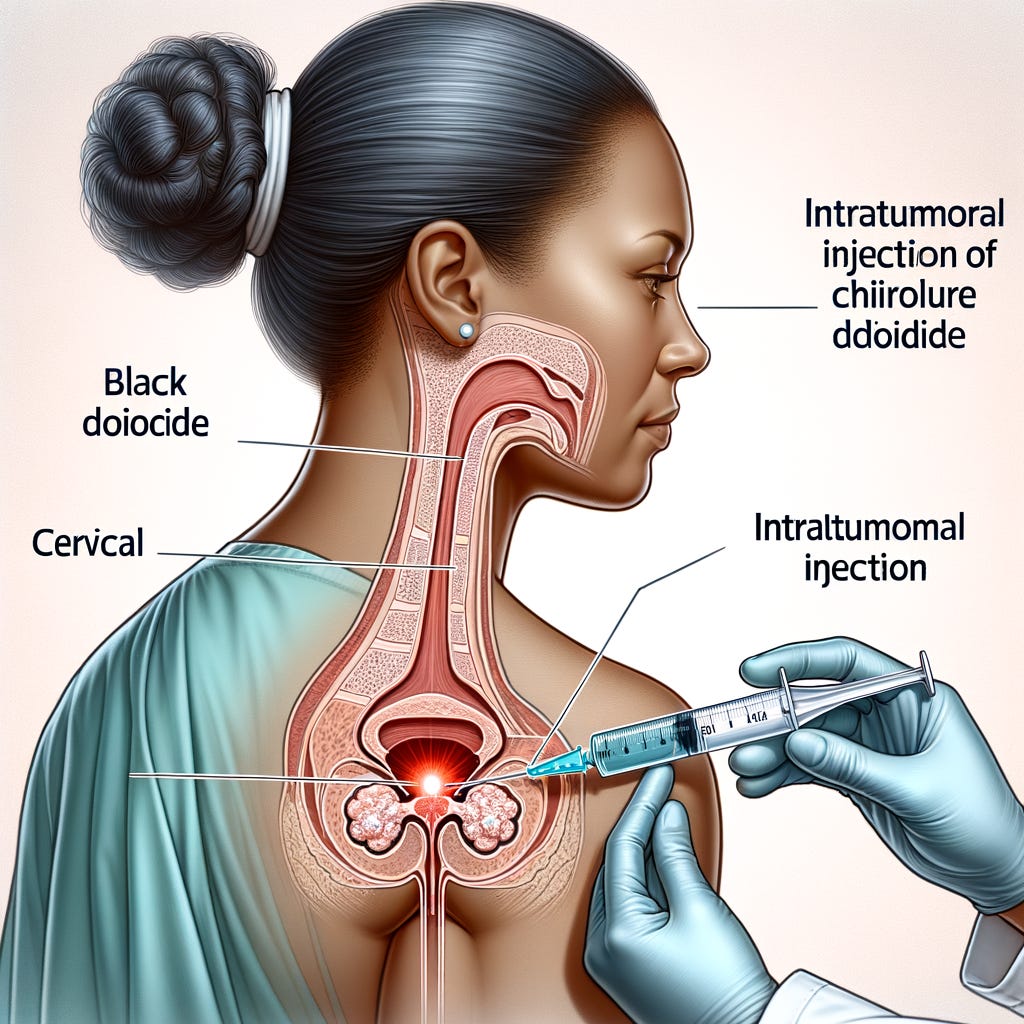10. Guidelines for Intratumoral Injection of Chlorine Dioxide in Cervical Cancer
10.1 Indications
10.1.1 Clinical lesions or spread to pelvic wall, vagina, and adjacent tissues.
10.1.2 Pelvic lymph node metastasis.
10.1.3 Recurrence after cervical cancer surgery or radiotherapy.
10.1.4 Normal bleeding and clotting times.
10.2 Contraindications
10.2.1 Cachexia with severe cardiac, pulmonary, hepatic, or renal dysfunction.
10.2.2 Active phase of diabetes, tuberculosis, and chronic liver disease.
10.2.3 Platelet count < 60×10⁹/L.
10.3 Puncture Needle and Auxiliary Instruments
Use a 23G×15 cm or 25G×9.0 cm puncture needle, 10–20 ml syringe, vaginal speculum, and ultrasound or CT machine.
10.4 Pre-treatment Preparation
10.4.1 Complete necessary examinations:
Routine blood, urine, and stool tests.
Liver and kidney function tests, tumor markers.
Vaginal secretion examination.
Cytological or pathological examination.
ECG, ultrasound, CT.
10.4.2 Discuss the procedure with the patient and obtain consent, addressing potential complications and precautions.
10.4.3 Administer analgesic, hemostatic, and antiemetic medications intramuscularly 15 minutes before treatment.
10.5 Treatment Procedure
Treatment can be guided by vaginal speculum or ultrasound/CT based on tumor location.
10.5.1 Disinfect the puncture site skin or vulva, vagina, or cervix, wear sterile gloves, and cover with a sterile drape.
10.5.2 Stabilize the puncture site or speculum with the left hand, insert the needle into the tumor center with the right hand, and inject chlorine dioxide solution. For tumors ≤4 cm, use single-point injection with 30% of the tumor volume (ml); for tumors >4 cm, use multi-point injections based on 30% of the segment volume (cm).
10.5.3 Use ultrasound or CT to monitor drug distribution within the tumor; stop injection upon saturation.
10.5.4 After injection, remove the needle, cover with sterile gauze, and secure with tape.
10.5.5 Observe for 10–15 minutes before transferring the patient back to the ward.
10.6 Post-treatment Care
10.6.1 For the first 1–3 days, monitor the treatment site for redness, ulceration, and pain, as well as systemic fever. Administer anti-infection and symptomatic treatments as needed.
10.6.2 Check blood count and liver and kidney function on the 3rd and 7th days post-treatment.
10.6.3 For additional treatments, wait 7 days between sessions. At the end of the treatment cycle, assess peripheral blood T lymphocyte subsets (CD4, CD8) for immune function and perform ultrasound or CT to evaluate efficacy.


